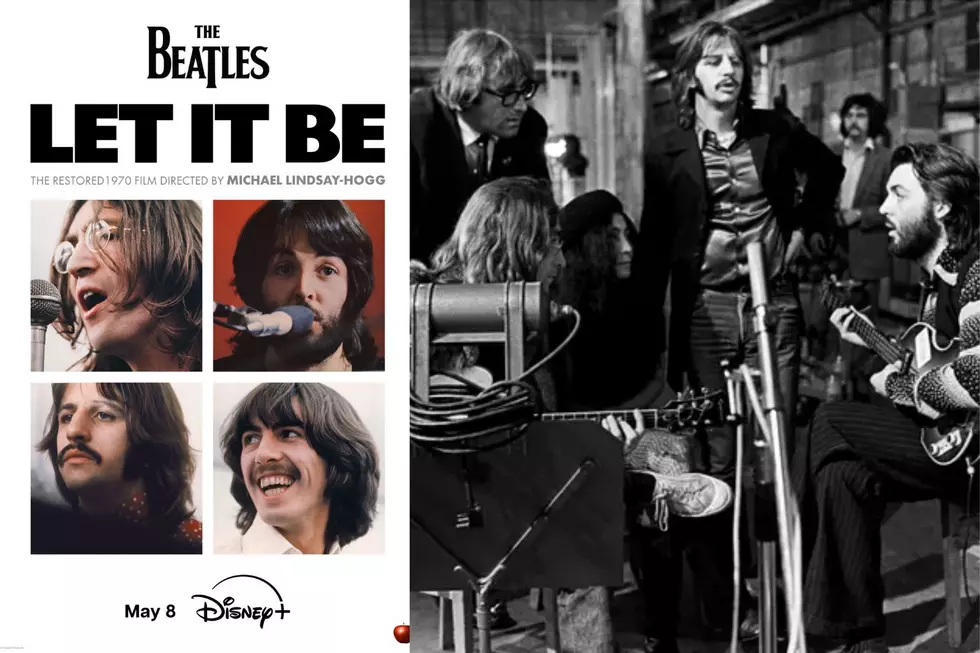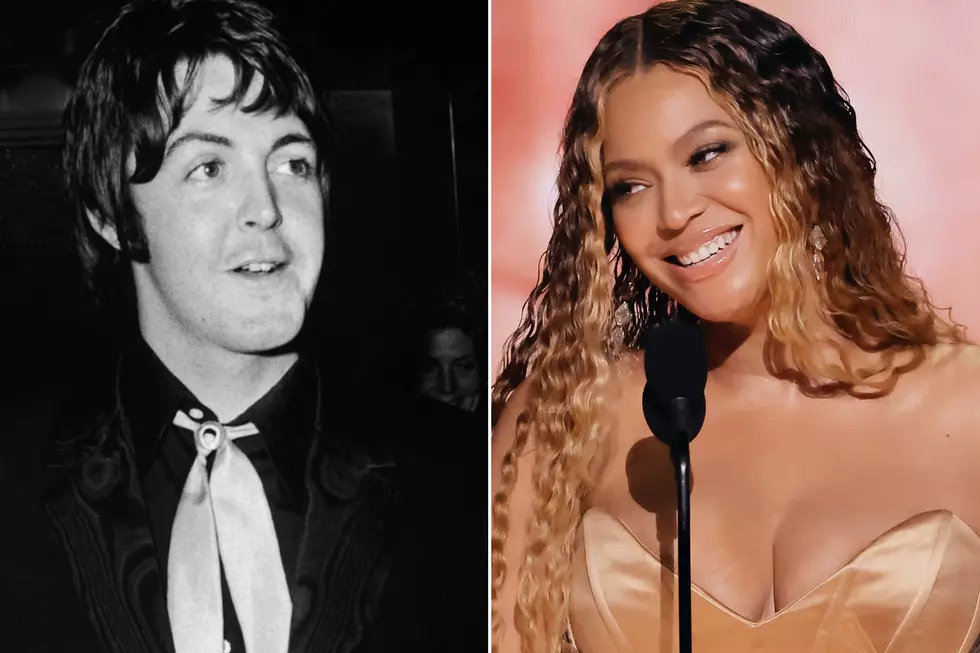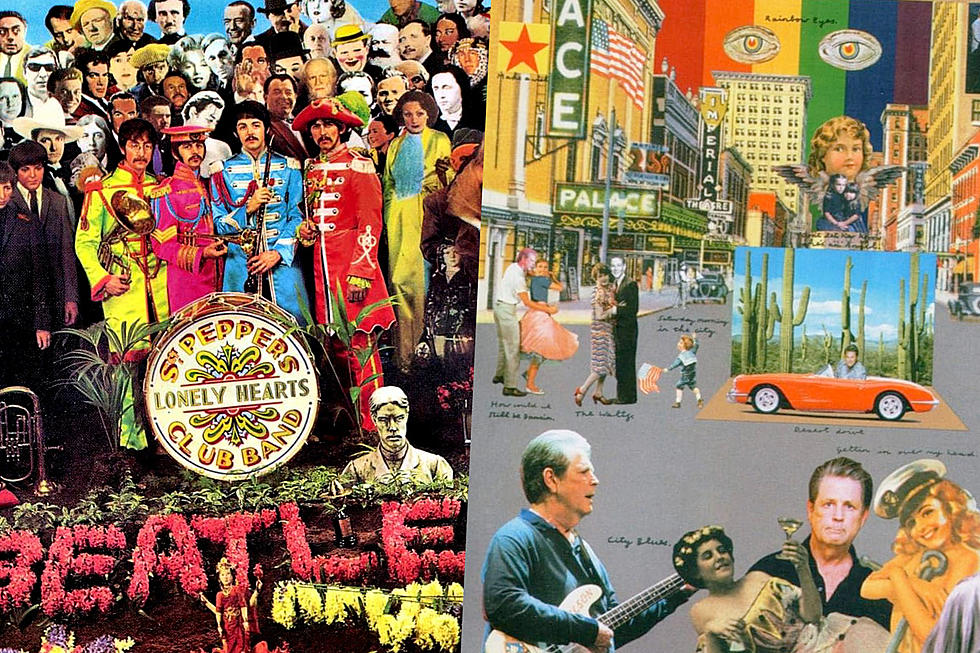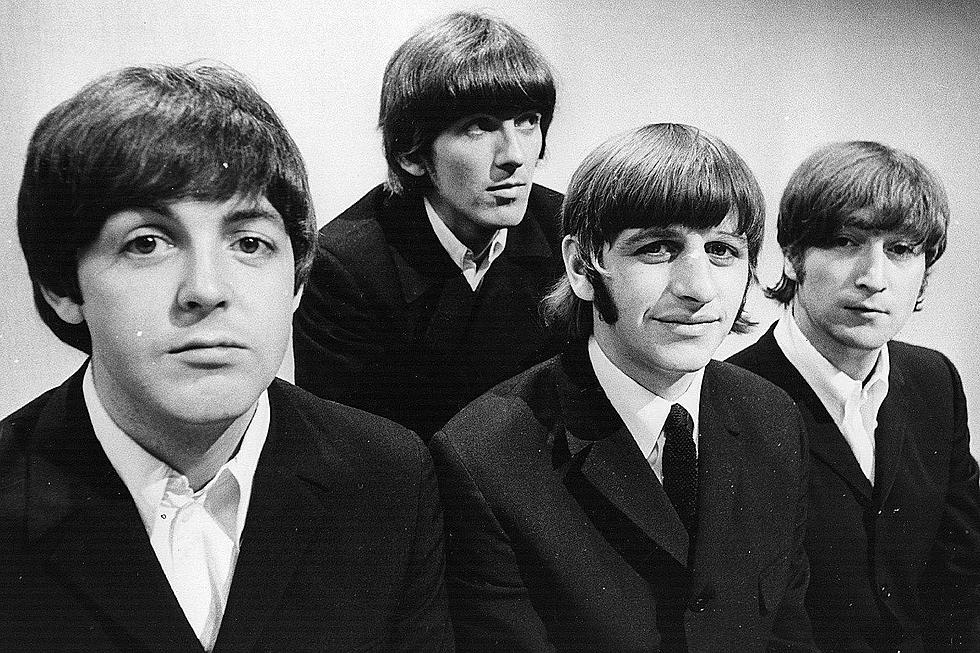
Paul McCartney Waxes Nostalgic on ‘Penny Lane’: The Story Behind Every ‘Sgt. Pepper’ Song
“Penny Lane” is most commonly associated with Paul McCartney – and rightfully so. He was the primary writer on this Beatles’ classic, sang lead on it and took charge of the song’s transformation from piano ditty to symphonic street scene. When fans divide up Beatles tunes among their chief creators, the supremely melodic “Penny Lane” is one of the most “Paul” of the “Paul songs.”
Yet “Penny Lane” has its roots in John Lennon’s songwriting. When crafting “In My Life” in 1965, he considered including a sort of virtual bus ride through Liverpool in the lyrics, including a stop at Penny Lane: “Penny Lane is one I’m missing / Up church and to the clocktower / In the circle of the Abbey.” Lennon eventually decided to focus on the emotion of “In My Life” and not its travel-guide elements, and the reference was scrapped.
But that’s not because Penny Lane wasn’t an important signpost for Lennon, as well as McCartney. It wasn’t just a street, but a suburban neighborhood in Liverpool in which both songwriters had lived in their youngest years. More importantly, the area was frequented by the pair in their teenage years because Penny Lane was a transportation hub for the bus-riding Beatles.
“A lot of our formative years were spent walking around those places,” McCartney said in The Beatles Anthology. “Penny Lane was the depot I had to change buses at to get from my house to John’s and to a lot of my friends. It was a big bus terminal which we all knew very well.”
When Lennon went a different direction with “In My Life,” McCartney must have made a mental note of the unexplored idea. He even spoke in the press about his goal to write music about his hometown, praising Eric Burdon for doing the same about Newcastle with the Animals. Clearly both Lennon and McCartney were in nostalgic moods in late 1966, when Lennon wrote “Strawberry Fields Forever” (name-checking the garden he played in as a child) and McCartney focused on “Penny Lane.”
The bassist began writing the song in his London home in December 1966, just after the band re-entered the studio to begin recording “Strawberry Fields Forever.” McCartney was energized by Lennon’s latest piece, but he also got some songwriting help from his partner, who came in to assist on the “Penny Lane”’s third verse.
“We really got into the groove of imagining Penny Lane, you know,” Lennon said in 1968. “The bank was there, and that was where the tram sheds were and people waiting and the inspector stood there, the fire engines were down there. It was just reliving childhood.”
It was a bit more than that. McCartney and Lennon took their memories and expanded them. Because there was a bank on the corner, the banker became a character in the song (“little children laugh at him behind his back”). The firehouse was a ways down the road, but the station and an imaginary firefighter got incorporated too (“he likes to keep his fire engine clean”). In a touch of the surreal, the barber is hosting a sort of art exhibition (“showing photographs of every head he’s had the pleasure to know”).
So “Penny Lane” became this part-real, part-fictional portrait of a neighborhood. The hybrid of fact and imagination enhances the song’s connection to memory. Like memories, the scene in “Penny Lane” is constantly shifting. There are “blue suburban skies” one minute, “pouring rain” the next. It seems to be summer and then we’re at Remembrance Day in November (the nurse selling poppies). “Penny Lane” is everything all at once, a kaleidoscope of images that even includes a dirty joke.
“We put in a joke or two, ‘Fish and finger pie’,” McCartney admitted in 1967, pointing out a sexual reference to the shenanigans that happened in the bus shelter. “The women would never dare say that, except to themselves. Most people wouldn't hear it, but ‘finger pie’ is just a nice little joke for the Liverpool lads who like a bit of smut.”
But there was nothing smutty about McCartney’s melody, as strange as it was beautiful. Drawing on a sort of doo-wop structure, he made the interesting choice of putting the verses (B major) one key removed from the choruses (A major), linking them with a B minor 7 and some other “jazz” chords. Like the lyrics to “Penny Lane,” the music goes to both expected and unexpected places.
Listen to the Beatles Perform 'Penny Lane'
Recording “Penny Lane” would be even more intricate than its composition suggested. It was the third song the Beatles worked on with producer George Martin along with engineers Geoff Emerick and Phil McDonald for their next album – eventually to be called Sgt. Pepper’s Lonely Hearts Club Band and to not feature “Penny Lane.”
In an unusual practice at that point in the Beatles’ recording history, McCartney began tracking the song on his own at London’s EMI (Abbey Road) Studios on December 29, 1966. On recent albums such as Rubber Soul and Revolver, the four Beatles would often lay down a basic rhythm track, then add overdubbed instrumentation to that. But this time, McCartney had something different in his head. Inspired by the Beach Boys’ recent recordings and the “clean” aesthetic of Pet Sounds, he wanted to begin only with his piano part.
Piano parts, actually. The first four-track rendition of “Penny Lane” included no less than three pianos played by McCartney, as well as cymbals, tambourine, sound effects and a harmonium. McCartney and Lennon added vocal parts the next day (McCartney on lead, Lennon on background), before halting for the New Year’s holiday. After 1967 had arrived, the other Beatles took on larger roles. The January sessions saw the addition of guitars, bass, percussion and even more piano added to the mix.
Ringo Starr rung a hand bell every time the fireman was mentioned in the lyrics. Despite contributing guitar leads and hand claps, George Harrison might have been left on the cutting room floor. Or maybe he’s hiding in there somewhere; it’s difficult to tell with the amount of instruments captured on the “Penny Lane.”
“Four-track recording was a real limitation with this particular song, so we were constantly having to bounce tracks together and do reductions,” Emerick said. “In the end, there were so many keyboards blended together, they ended up becoming a sound of their own; listening to the finished recording, it’s hard to pick out individual instruments. Some of the overdubs even got buried altogether because of the density of the instrumentation and the number of bounces. Nonetheless, ‘Penny Lane’ contains a lot of great sounds.”
Some of those great sounds were created by people outside of the Beatles. McCartney worked with Martin to bring in a number of classical musicians to add to “Penny Lane” on Jan. 9 and 12 – a running total included four flutes, four trumpets, two oboes, two English horns and one double bass. Some of those are prominent in the final mix, some are gone completely (English horns, also known as cor Anglais) and the double bass is only heard for a few notes.
Still, McCartney wasn’t satisfied with the recording. He was obsessed with a performance he had seen on BBC2 on Jan. 11, in which he’d watched a man play a small trumpet. When Martin told him that was a piccolo trumpet played by his friend David Mason (no, not the guy in Traffic), McCartney was ecstatic that the Beatles’ producer could arrange for him to overdub a part onto “Penny Lane.” He was invited and accepted to record on Jan. 17.
“It was a difficult session, for two reasons. First, that little trumpet is a devil to play in tune, because it isn’t really in tune with itself,” Martin wrote in All You Need Is Ears. “Secondly, we had no music prepared. We just knew that we wanted little piping interjections. … As we came to each little section where we wanted the sound, Paul would think up the notes he wanted, and I would write them down for David. The result was unique, something that had never been done in rock music before, and it gave ‘Penny Lane’ a very distinct character.”
With Mason’s high-pitched solo intact, McCartney was thrilled with the results. So was producer Martin, who considered “Penny Lane” (along with “Strawberry Fields Forever”) to be the best music the Beatles had yet made in the studio. That’s what he said to the band’s manager Brian Epstein, who was getting antsy about the Beatles’ lack of visibility since August, the month of the Fab Four’s final concert and most recent single.
Instead of saving all of the new stuff for the next album, which was going to take at least a few more months, Epstein wanted to put out a single. On Martin’s suggestion, with the Beatles agreeing, Parlophone (in the U.K.) and Capitol (in the U.S.) would release “Penny Lane” and “Strawberry Fields Forever” as a double A-sided single in February 1967. Although “Strawberry Fields” has come to be considered the more daring studio achievement, “Penny Lane” was more popular on radio at the time and helped the Beatles to another No. 1 smash in America – although they got stalled at No. 2 in England behind Engelbert Humperdinck.
Regardless, many musicians and journalists consider the single to be the best ever released in pop music history. Although Martin remained extraordinarily proud of both songs, he came to see that single as a misstep that prevented the Beatles from fully capitalizing on their most creative compositions. He felt that the double A-sided concept put “Penny Lane” in competition with “Strawberry Fields Forever,” something that wouldn’t have happened if they were put on Sgt. Pepper or released with different B-sides.
“The only reason that ‘Strawberry Fields Forever’ and ‘Penny Lane’ didn’t go onto the new album was a feeling that if we issued a single, it shouldn’t go onto an album,” Martin said in The Beatles Anthology. “That was a crazy idea, and I’m afraid I was partly responsible. … It was a smashing single – but it was also a dreadful mistake.”
The city of Liverpool learned from its dreadful mistakes regarding the real Penny Lane. After decades of street signs repeatedly going missing, Liverpool finally developed markers that would resist pilfering by theft-minded tourists. The lane, the former bus shelter and the neighborhood continue to attract visitors looking for their own ear- and eye-full of Penny Lane.
The Best Song on Every Beatles Album
Who Was the Fifth Beatle?
More From Ultimate Classic Rock









